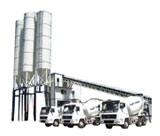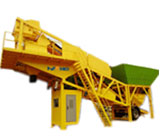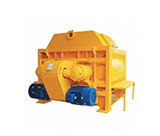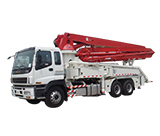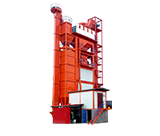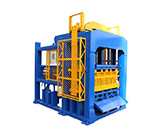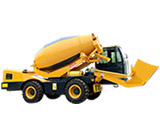Wet Type Concrete Batching Plant
2025.11.05
A wet type concrete batching plant is a type of equipment used to produce concrete, primarily in construction engineering and infrastructure development. Generally, the output of a wet mix concrete batching plant can range from 25 to 240 cubic meters per hour. The key feature of a wet batching plant is that it uses a precise metering system to mix raw materials such as cement, aggregates (sand, stone), water, and admixtures in a specific ratio, followed by thorough mixing by the mixing host, ultimately producing wet mixed concrete that meets the project requirements. Compared to dry concrete batching plants, wet type batching plants have a more thorough mixing process, resulting in higher quality concrete.


Main component systems of a wet type concrete batching plant:
- Mixing host:
Typically uses a twin-shaft forced concrete mixer, characterized by high mixing efficiency, good mixing uniformity, and strong wear resistance. The mixing host is the core component of the wet concrete batching plant, responsible for mixing various raw materials to form homogeneous concrete.
- Material weighing system:
Responsible for accurately weighing various materials according to the set mix proportions. This system typically consists of electronic scales, sensors, and controllers, enabling precise metering of various materials such as cement, aggregates, and water to ensure consistent concrete quality.
- Material conveying system:
This includes aggregate conveying, cement conveying, and water conveying. Aggregate conveying usually uses belt conveyors or bucket elevators to transport aggregates from silos to the mixing unit; cement conveying generally uses screw conveyors or pneumatic conveying systems to transport cement from cement silos to the mixing unit; water conveying is achieved through pumps and pipelines.
- Material storage system:
This includes cement silos, aggregate silos, and additive silos. These silos are typically constructed of steel or reinforced concrete, possessing sufficient strength and sealing performance to ensure that materials are not exposed to moisture, caking, or contamination during storage.
- Control system:
This is the brain of the wet batch plant, responsible for the overall operation and control of the plant. The control system typically uses a PLC programmable controller or a touch screen control system to achieve automated and intelligent control, improving the operating efficiency and stability of the concrete batching plant.
Advantages of wet type batching plants:
- Stable quality:
Due to centralized mixing, wet concrete batching plants can strictly control the concrete mix proportions and mixing time, ensuring stable concrete quality.
- High production efficiency:
Wet type concrete batching plants are typically equipped with high-efficiency mixing hosts and conveying systems, enabling rapid and continuous production to meet the concrete demands of large-scale projects.
- Good environmental performance:
Wet mix concrete batching plants are usually equipped with dust removal and noise reduction devices, effectively reducing dust and noise pollution and meeting environmental protection requirements.
- Strong adaptability:
Wet concrete batching plants can be customized according to project needs, adapting to projects of different scales and requirements.
Application scenarios of wet type concrete batching plant:
Wet concrete batching plants are widely used in various large-scale infrastructure construction projects and places with high concrete demand, such as:
- Urban and rural ready mixed concrete:
Providing high quality ready mixed concrete for urban and rural construction projects.
- Road and bridge engineering:
Providing concrete supply for road, bridge, and other transportation infrastructure projects.
- Water conservancy engineering:
Providing concrete pouring services for reservoirs, hydropower stations, and other water conservancy projects.
- Airports and ports:
Provide concrete support for airport runways, port terminals and other projects.

